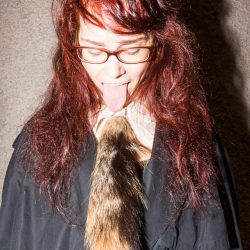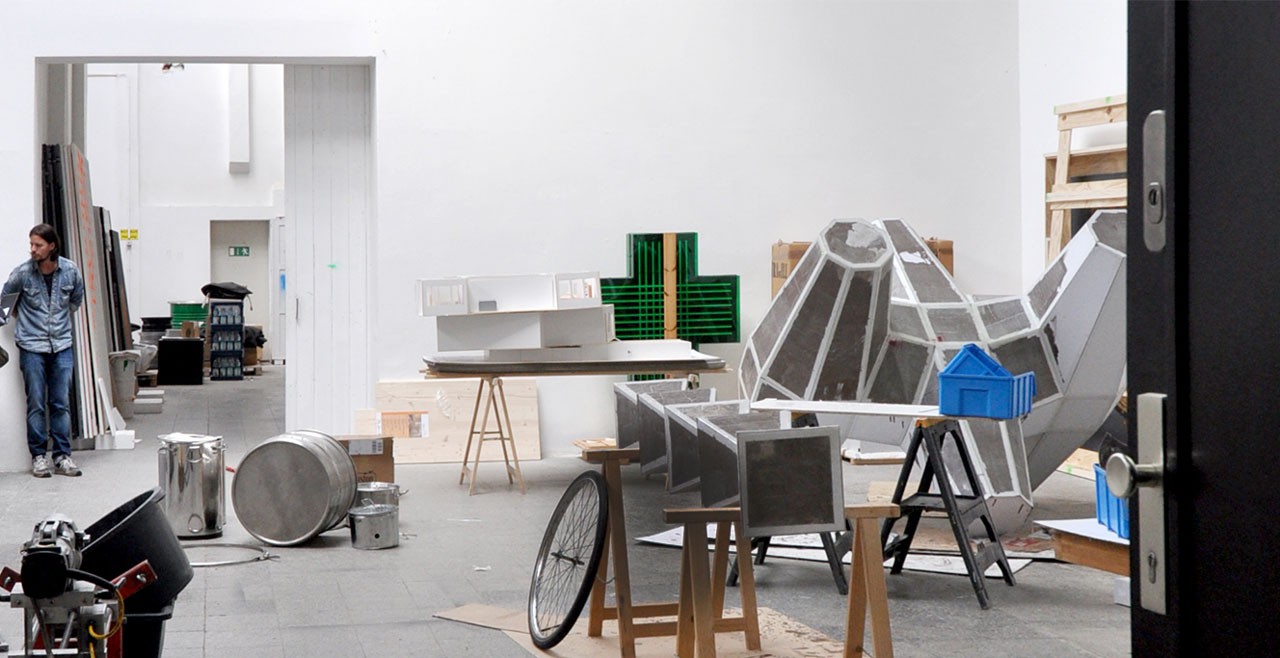
SARAH LüDEMANN
...Page is loading...

Berlin, Germany
Michael moved to Berlin ten years ago and was one of the first artists in this area - Weissensee has in the meantime become an attractive location for others too. His 300 sqm space with soaring high ceilings and beautiful cut-out iron beams was formerly the legendary Joe May film studio. No less than Fritz Lang was shooting here, and this is where Marlene Dietrich is said to have stood in front of a camera for the first time. Although during the...
Read moreMichael moved to Berlin ten years ago and was one of the first artists in this area - Weissensee has in the meantime become an attractive location for others too. His 300 sqm space with soaring high ceilings and beautiful cut-out iron beams was formerly the legendary Joe May film studio. No less than Fritz Lang was shooting here, and this is where Marlene Dietrich is said to have stood in front of a camera for the first time. Although during the GDR period a laundry took over, it could not wash away the charm and spirit of the building.
This seems to be an amazing match with an inspired and inspiring multigenius artist like Michael Sailstorfer.
As we entered the studio our attention was drawn to martial looking wave breakers and a Brancusi style sculpture – both made of cardboard covered with fiberglass. „They are underwater sculptures. I sink them in the sea.” Michael says as if this was a normal thing to do. They then get photographed with different lighting techniques, depending on their depth and whether they are sunk in the Caribbean (clear water) or in the Baltic Sea (murky water).
In the workshop-like surroundings we curiously find several small Statue of Liberty replicas, Michael tells us they are Drill bits of a drill press in order to bore holes into walls of museums („Freedom Fries“). Metal barrels are arranged to resemble a drum set in the center of the studio space, we are told they will be upgraded to a rotisserie; the drummer will be able to grill as he plays.
After having gained insight into Michaels perfectly structured digital archive, where I could see images of planes and caravans converted into houses (“Homeland Song”) – placed on the ground or fastened between roofs, bus stations in the countryside converted into livable spaces („Living with Traffic Connections“), and exploding trees, I stumbled over an assortment of antennas which can be used as coat hangers.
I asked him how he could deal with so much practical building and ironwork at such a big scale, like embellishing numerous bus stations to then deconstruct them in order to take them to the Schirn Kunsthalle for a show. Being an architect, I tried to sum up the number of people and costs… I surmise that he must have done much of the work before he was able to make a brilliant living from his art. He always did most of the work himself, he says with ease: „I did not think about it. I just did it.“
Gallerie Johann Koenig, Berlin | http://www.johannkoenig.de/33/michael_sailstorfer/biography.html